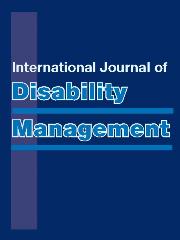No CrossRef data available.
Article contents
Identifying Barriers to Continued Training for Older Workers in a Production Plant: A Mixed-Methods Approach
Published online by Cambridge University Press: 16 November 2017
Abstract
An aged and shrinking workforce represents one of the major challenges for companies in the next decades. Capitalising on and developing older workers’ potential will therefore be key for organisational success. Research shows, however, that older workers in companies are less likely to receive training than their younger colleagues and that knowledge transfer before retirement frequently fails. Based on these findings, we used a mixed-methods approach to investigate older workers’ motivation to participate in advanced training and knowledge transfer. Older workers in a first, quantitative study (N = 176) reported being significantly less likely to participate in training and having fewer promotion opportunities. Contrary to our expectations, middle-aged workers already showed this decline in training opportunities, which may suggest that leaving workers behind because of their age is a larger problem than previously assumed. To investigate the subjective reasons for this lack of training, we conducted problem-centered interviews with older workers (age > 50; N = 15). Qualitative content analyses identified valuation, immediate job relevance, and setting work goals until retirement as key motivators to participate in continued employee training. Moreover, older workers confirmed our quantitative finding that even middle-aged workers lack training. We discuss how companies can promote older workers’ inclusion in formal and informal training to improve working conditions and retain knowledge.
Information
- Type
- Articles
- Information
- Copyright
- Copyright © The Author(s) 2017

